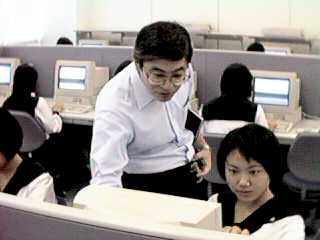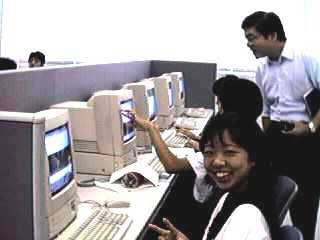At our school, students spend 34 hours per week in classes. Each week we teach an additional hour on Mondays and Wednesdays, so that students can have Saturdays off. From the tenth grade, students are divided into a science course and a general course. Because our schedule is so full, it's difficult to spare one credit to teach students how to use computers. Accordingly, we've decided to promote computer use around the following two themes.
(1) Everyday use of a network
(2) Network use within the regular curriculum


 Conference to introduce results from the 100-School Networking Project (Phase II)
Conference to introduce results from the 100-School Networking Project (Phase II)